Breast Cancer Mammograms
in Long Island, NY
Convenient locations in Lake Grove & Garden City, NY
What is mammography?
Mammography is a specific type of breast imaging that uses low-dose x-rays to detect cancer before women experience symptoms and when it is most treatable. At PURE Mammography on Long Island, we specialize in state-of-the-art 3D mammograms, performed in a spa-like environment.
Regular screening mammograms have been shown to markedly reduce the number of women who die from breast cancer.
Every major medical organization experienced in breast cancer care, including the American College of Radiology (ACR), the Society of Breast Imaging (SBI), the National Comprehensive Cancer Network (NCCN) and the American College of Obstetrics and Gynecology (ACOG), recommend that women start getting annual mammograms at age 40. For some women, mammography testing should begin sooner, depending on medical history and genetic predisposition.
Contact Us Today For A Consultation
Updates from Director of Pure Mammography
Director of Pure Mammography, Felicia, discusses the safety measures that are being taken within the office with regard to COVID-19, the flexibility of hours available and the importance of regular wellness check-ups and screenings. There is no co-pay, no deductible and no cost to you for a screening. View more here or call us to book your appointment!
View this post on Instagram
Get the Facts: Mammograms Save Lives
- 1 in 8 women in the U.S. will be diagnosed with breast cancer
- 3 in 4 women diagnosed have no family history or risk factors
- 1 in 6 breast cancers occur in women in their 40s
- 40 is the age to start annual mammograms
Can women under 40 get mammograms?
Regular mammograms aren’t recommended for women under 40 years of age, in part because their breast tissue tends to be dense, which makes the mammogram less effective. In 2015, the American Cancer Society actually raised its recommended age for a mammogram to 45. There is some debate about this, as other groups still recommend beginning mammograms at 40.
However, if you have a family history of breast cancer or other risk factors, then mammograms may be recommended. This would be on an individual basis.
The first sign of breast cancer to look out for
In its early stages, breast cancer usually shows no symptoms. As a tumor grows, you may notice these six signs:
- Lump in your breast of underarm — This is often the first symptom of breast cancer. These lumps that do not go away are usually painless.
- Swelling in the armpit, collarbone, or breast — This could mean breast cancer has spread to the lymph nodes in that area. This may occur before you feel a lump.
- Pain or tenderness in your breast — Lumps are usually painless, but breast pain or tenderness can be a sign of cancer.
- Flat or indented area on your breast — This can be a tumor you cannot see or feel.
- Breast changes — You may notice a difference in size, contour, texture, or temperature.
- Change in your nipple — Your nipple could pull inward, become dimpled, burn, itch, or develop sores.
Where can I get a mammogram?
Mammograms should only be done at a facility that is accredited by the Food and Drug Administration (FDA) and the American College of Radiology (ACR). Quality is critical in mammography services, and the ACR is recognized as holding the highest standard in radiology.
When deciding where to get a mammogram, be sure that the facility has certified and trained mammography technologists and board-certified radiologists who use high-quality equipment. PURE Mammography is home to some of the top breast imaging specialists in the field.
Contact Us Today For A Consultation
How much does a mammogram cost?
Mammograms can vary in price, but most insurance plans will cover annual mammogram screenings. In fact, the Affordable Care Act requires all new health insurance plans to cover yearly mammograms with no co-payment for women ages 40 and older. Some centers, like PURE Mammography, offer 3D mammography at no additional cost. For uninsured women, PURE offers low-cost mammograms that are the most affordable in the area.
Alternatives to getting a mammogram
You may have heard claims from some providers that thermography and ultrasounds are acceptable alternatives to mammograms for breast cancer screening. The American Cancer Society doesn’t agree, stating that mammograms are still the best screening test available for breast cancer.
Thermography
Thermography is a radiation-free imaging technique that creates a picture based on the temperature differences in the tissue being examined. The thinking is that cancerous areas tend to be warmer because they have a higher level of blood flow and metabolism. This can at times be true, but some cancerous cells do not give off additional heat, and some that do are located too deep within the tissue to register in the thermography screening. This creates a high number of both false positive and false negative thermographic readings.
Breast ultrasounds
Breast Ultrasounds can be used to determine whether a breast lump is solid or filled with fluid. However, it also creates a high likelihood of false positive and false negative results. Ultrasound cannot always detect early signs of cancer, such as the tiny calcium deposits that form. Ultrasound cannot replace the need for a mammogram, but it can be effective when used in conjunction with a mammogram to further test abnormalities.
Who interprets the Mammogram results and how do I get them?
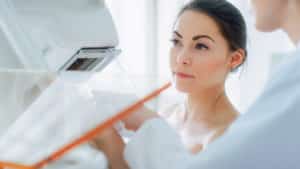
You will also be notified of the results by the mammography facility. At PURE, exam results are available within 24-72 hours, and patients receive their report in the mail.
What if I have an abnormal mammogram?
If your report says you need additional imaging, don’t panic. In the large majority of women (around 80%), the extra view shows no abnormality and no need for further testing. These false alarms are often due to overlapping layers of normal breast tissue, which can sometimes produce unclear results.
At PURE Mammography, all women receive a 3D mammogram, which is more likely to get it right the first time. 3D mammograms have greater accuracy and reduce the chance of being called back for additional testing by as much as 40%.
When women do need follow-up testing, these studies can be promptly performed at any of Medical Arts Radiology’s seven Women’s Imaging Centers across Long Island. These full-service offices are recognized as Breast Imaging Centers of Excellence by the American College of Radiology.
Contact Us Today For A Consultation
Do mammograms hurt?
Every woman experiences mammograms differently. The discomfort stems from the pressure placed on breasts by the testing equipment. While it is necessary to manipulate and compress the breasts during mammography, the technologist uses various comfort measures and works swiftly to complete the process as quickly as possible.
Pain is not only subjective but is also influenced by various factors, such as the size of the breasts, various positions during the screening, and the time of the month during which testing takes place. Patients are advised to expect some degree of discomfort, but not necessarily pain. Comfort may be improved by scheduling mammograms the week after menstruation. This is when hormones are more regulated during the cycle and breast tenderness may be at its lowest.
What Our Patients Have to Say
“Victoria was so nice she was the tech today performing the mammograms. Very sweet and accommodating. Girls at the front desk were great too! Overall a great place and great facility! I like they remind you in advance for appointments. This is the best place to go! I travel over an hour just to come to this place. Thank you, everyone, at Pure for making our visit more comfortable and relaxing!” -Anita P.
Click here for more patient testimonials
How often should I get a Mammogram?
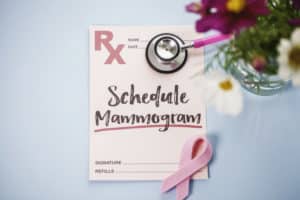
Mammogram guidelines may vary, so it is important for every woman to talk to her doctor about her health history and family medical history related to breast cancer. Additionally, a prompt consultation and examination should be scheduled if changes in breast tissue are noticed. Suspicious changes include tenderness, thickening of the breast skin, or a palpable or visible lump. These symptoms do not always indicate breast cancer. They do, however, indicate a need to explore breast health with an exam and proper screening.
What is the Mammogram process like?
Generally, mammograms include the following:
- The patient removes clothing from the waist up. A robe is provided to wear during the screening. Jewelry that may interfere with the procedure will need to be removed.
- The mammogram technologist may ask about changes such as lumps in either breast. If any exist, an adhesive marker will be placed on that spot.
- Mammography is performed on one breast at a time. The patient stands in front of the machine and the technologist adjusts the lower plate so the breast may “sit” on top of it. The breast may be examined or palpated at this time, as well.
- Once the breast is situated on the lower plate, an upper place is adjusted to sit on top of the breast. This plate will press down on breast tissue. It is necessary to compress the breast to minimize radiation usage and maximize the clarity of the image.
- Patients may be asked to hold their breath while images are taken.
- Images may be taken at several angles, requiring repositioning of the breasts between the two plates.
- Once all images have been obtained, the patient waits in a separate area while films are observed for clarity. If more films are needed, the imaging process is repeated.
- Most mammogram exams take only 20 to 30 minutes
Contact Us Today For A Consultation
Can you eat before having a mammogram?
Yes. There is no need to fast before a mammogram. You can eat what you like, drink, and take medication. These will in no way affect your results.
Can you wear deodorant to your mammogram?
You should not use deodorants, antiperspirants, powders, lotions, creams, or perfumes under your arms or on your breasts. Metallic particles in powders and deodorants could be visible on your mammogram and could cause confusion. Aluminum is a common ingredient in deodorants and these other products, and on a mammogram, their dense particles can look just like calcifications.
Calcifications are small deposits of calcium that show up as bright white specks or dots on the soft tissue background of the breasts. Calcifications are a sign of some underlying process going on in the breast tissue. Usually, it isn’t a concern, but sometimes calcification can be a sign of early cancer developing inside a breast duct. This calcification occurs with abnormal cells grow unchecked inside the duct and they become so prevalent that some of the cells die and the body can’t clear them away. These cells can harden, forming areas of calcification.
What are the risks?
Multiple studies have been conducted to understand the risks of mammograms. Researchers have concluded that the benefits of early breast cancer detection via mammography far outweigh the risks that exist. These include:
- Exposure to low-dose radiation.
- Unpredictable accuracy in some instances, such as dense breasts, may lead to false-positive or false-negative results.
- Difficulty reading mammography in younger women due to ligaments and glandular structure.
- The potential need for additional testing. Studies suggest that approximately 10 percent of mammograms need further testing, such as a biopsy or ultrasound.
- Mammograms cannot detect all cancers, such as growths in the underarm area.
How accurate is the screening?
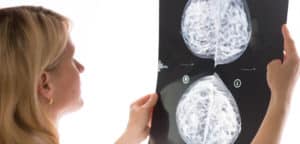
How much radiation will I be exposed to?
Mammography is a type of x-ray and so inherently exposes patients to a low dose of radiation. Clinically speaking, two views of each breast incurs approximately 0.4 millisieverts of radiation. Each year, most Americans are exposed to about 3 millisieverts of radiation in their day-to-day lives. The radiation exposure during a mammogram equates to the same amount a woman would face in a seven-week period just within her natural environment. The risks associated with this are very low.
Are there any types of breast cancer that don’t show up on a mammogram?
Mammograms are very effective at spotting breast cancer, but there is one rare form, known as inflammatory breast cancer (IBC), that may not show up on a mammogram. IBC is rare, making up between 1 to 5 percent of all breast cancers. IBC differs from other types of breast cancer in its symptoms, outlook, and treatment. IBC has symptoms of inflammation like swelling and redness, but infection or injury do not cause IBC or symptoms. These symptoms are caused by cancer cells blocking lymph vessels in the skin, causing the breast to look inflamed.
Inflammatory breast cancer does not cause a lump, so it might not show up on a mammogram.
Schedule a Consultation in Suffolk County, NY Today!
Mammograms are the single best tool to find breast cancer at its earliest stages — long before you or your doctor can feel a lump. Having regular 3D mammograms performed by an experienced board-certified breast imaging specialist is the best way to detect abnormalities early.
Visit PURE Mammography on Long Island today with no appointment necessary. You can also call 631-652-3424 or fill out the form on this page to learn more about PURE or to pre-schedule an appointment.
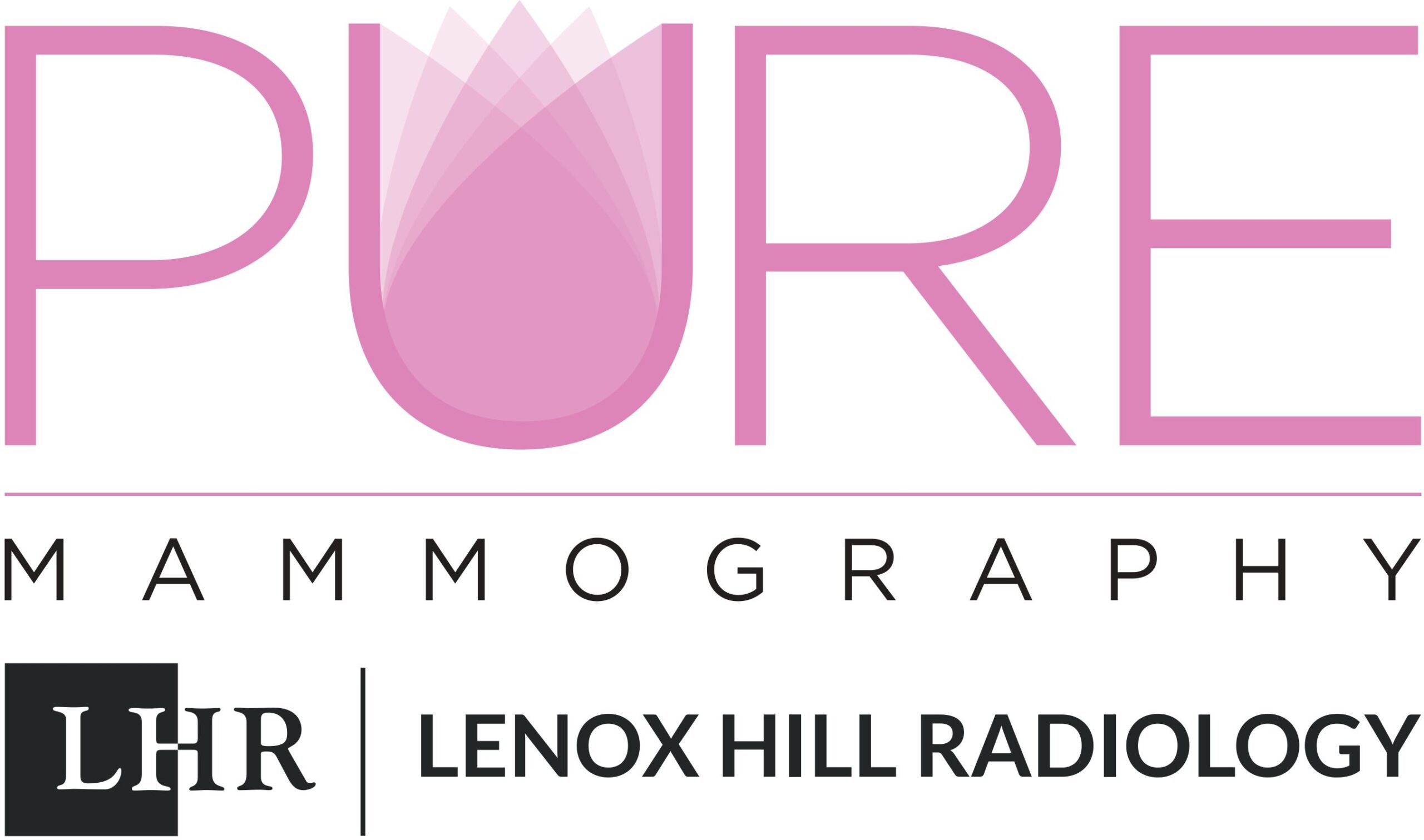
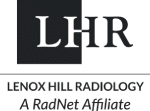 Learn More About LENOX HILL RADIOLOGY
Learn More About LENOX HILL RADIOLOGY